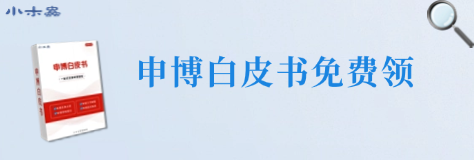| 查看: 1677 | 回复: 8 | |||
| 当前只显示满足指定条件的回帖,点击这里查看本话题的所有回帖 | |||
conanwj版主 (著名写手)
|
[交流]
《自然》杂志谈中国学术论文发表或消亡已有7人参与
|
||
|
《自然》杂志谈中国学术论文发表或消亡 2009年月12日《自然》杂志以新闻稿形式,就中国最近披露的一系列学术不端行为做了述评,并对其中有关方面的利害关系进行剖析。 Published online | Nature 463, 142-143 (2010) | doi:10.1038/463142a | , 142-143 (2010) | doi:10.1038/463142a News Publish or perish in China The pressure to rack up publications in high-impact journals could encourage misconduct, some say. Jane Qiu The latest in a string of high-profile academic fraud cases in China underscores the problems of an academic-evaluation system that places disproportionate emphasis on publications, critics say. Editors at the UK-based journal Acta Crystallographica Section E last month retracted 70 published crystal structures that they allege are fabrications by researchers at Jinggangshan University in Jiangxi province. Further retractions, the editors say, are likely. Chinese universities often award cash prizes, housing benefits or other perks on the basis of high-profile publications, and the pressure to publish seems to be growing. A new study from Wuhan University, for instance, estimates that the market for dubious science-publishing activities, such as ghostwriting papers on nonexistent research, was of the order of 1 billion renminbi (US$150 million) in 2009 — five times the amount in 2007. In other studies, one in three researchers surveyed at major universities and research institutions admitted to committing plagiarism, falsification or fabrication of data. "The extent of the misconduct is disturbing," says Nicholas Steneck, director of the Research Ethics and Integrity Program at the University of Michigan in Ann Arbor. "It highlights the challenges China faces as it struggles to rapidly improve the research capacity of a very large system — with significant variations in quality — to be a world-class player in science." Two weeks ago, reacting to the retractions of the crystallography papers, Jinggangshang University fired the correspondent authors, Zhong Hua and Liu Tao. It is unclear whether their co-authors, who include researchers from other institutions in China, will also be investigated. The journal's editors say that the discrepancies came to light during tests of software designed to flag possible errors and unusual chemical features, such as abnormal distances between atoms. The software identified a large number of crystal structures that didn't make sense chemically; further checking, the editors say, suggests that the authors simply changed one or more atoms of an existing compound of known structure, then presented that structure as new. Zhong and Liu could not be reached for comment. Editors at the journal are now checking the authenticity of other published crystal structures, including all submissions from Jinggangshan University. Half of the 200,000-odd crystal structures published by the journal during the past five years have come from China. William Harrison, a chemist at the University of Aberdeen, UK, who is one of three section editors for the journal, would not discuss the ongoing investigation but says that the generation of large numbers of structures by one group would not necessarily raise questions, because diffractometers can easily collect a couple of data sets a day. "In terms of papers submitted to Acta E, the vast majority coming from China are correctly determined structures, and they make a valuable contribution to science," he says. Nevertheless, the Wuhan University study suggests that misconduct could be widespread in many fields. The team, led by computer scientist Shen Yang, used website analyses and onsite investigations to identify a wide range of dubious publishing activities. These include ghostwriting theses and academic papers on fictional research, bypassing peer-review for payment, and forging copies of legitimate Chinese or international journals. The researchers analysed the most popular 800 websites involved in such activities — which together rack up 210,000 hits a day — and found that the cost of each transaction is typically 600–12,000 renminbi. Three-quarters of the demand comes from universities and institutions, says Shen. "There is a massive production chain for the entire publishing process," he says. Concerned by such trends, China's science ministry commissioned a survey of researchers, the results of which remain under wraps. However, several sources revealed to Nature that roughly one-third of more than 6,000 surveyed across six top institutions admitted to plagiarism, falsification or fabrication. Many blamed the culture of jigong jinli — seeking quick success and short-term gain — as the top reason for such practices, says Zeng Guopin, director of the Institute of Science Technology and Society at Tsinghua University in Beijing who was involved in running the survey. The second most-cited cause is bureaucratic interference in academic activities in China. Most academic evaluation — from staff employment and job promotion to funding allocation — is carried out by bureaucrats who are not experts in the field in question, says Fang Shimin, a US-trained biochemist who runs a website called 'New Threads' that exposes research misconduct in China. "When that happens, counting the number of publications, rather than assessing the quality of research, becomes the norm of evaluation," he says. Cao Nanyan, a colleague of Zeng's at Tsinghua, conducted a similar survey commissioned by the Beijing municipality, which surveyed 2,000 researchers from 10 universities and research institutions. It, too, found that roughly one-third of respondents admitted to illegitimate practices. To critics such as Rao Yi, dean of the life-science school at Peking University in Beijing, the lack of severe sanctions for fraudsters, even in high-profile cases, also contributes to rampant academic fraud. Many researchers criticize the fact that Chen Jin, a former researcher at Shanghai Jiao Tong University who is accused of falsely claiming to have developed a series of digital signal-processing chips, was fired with no other repercussions. Meanwhile, others involved in the scandal have gone unpunished. "You send out a very wrong signal when such high-profile cases are not dealt with properly," says Rao. http://www.nature.com/news/2010/100112/full/463142a.html 本文引用地址: http://www.sciencenet.cn/m/user_content.aspx?id=287344 [ Last edited by conanwj on 2010-9-15 at 13:14 ] |
» 猜你喜欢
 博后资助名单出来了
已经有11人回复
博后资助名单出来了
已经有11人回复
 大龄已婚想读博如何
已经有18人回复
大龄已婚想读博如何
已经有18人回复
 处在人生职业的分水岭
已经有4人回复
处在人生职业的分水岭
已经有4人回复
 职称论文
已经有9人回复
职称论文
已经有9人回复
 咨询一下江西的高校待遇,人文氛围怎么样?
已经有5人回复
咨询一下江西的高校待遇,人文氛围怎么样?
已经有5人回复
 研究生的生活该是什么样
已经有3人回复
研究生的生活该是什么样
已经有3人回复
 大学老师
已经有9人回复
大学老师
已经有9人回复
 广东省自然科学基金-面上项目消息有了么?
已经有3人回复
广东省自然科学基金-面上项目消息有了么?
已经有3人回复
 博后面上太难了
已经有8人回复
博后面上太难了
已经有8人回复
 76批博后基金
已经有3人回复
76批博后基金
已经有3人回复
» 本主题相关价值贴推荐,对您同样有帮助:
 如何在顶级科学杂志上发表论文.2 -鲁白(ZZ)
已经有11人回复
如何在顶级科学杂志上发表论文.2 -鲁白(ZZ)
已经有11人回复 《中国科技博览》杂志社征稿
已经有6人回复
《中国科技博览》杂志社征稿
已经有6人回复 【畅谈学术论文 分享科研经验】日记—思想的火花
已经有47人回复
【畅谈学术论文 分享科研经验】日记—思想的火花
已经有47人回复











 回复此楼
回复此楼

 10
10